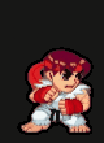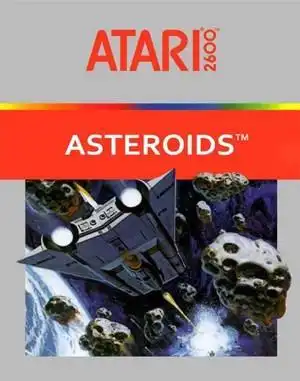Remember the hum of the arcade cabinet, the glow of the vector display, and the frantic sound of your ship's thrust? For many of us, that experience is inextricably linked to one game: Asteroids. More than just a video game, it was a phenomenon, a test of reflexes and nerve that defined an era.
Released by Atari in 1979, Asteroids wasn't the first space shooter, but it perfected the formula, offering a simple yet endlessly challenging premise that captivated millions. It became one of the most successful arcade games of all time and left an indelible mark on gaming history.
But what made this minimalist space rock dodging simulator so compelling? Let's thrust back in time and find out.
A Blast from the Past: What Made Asteroids an Arcade Legend?
Step into the pilot seat of a small triangular spaceship, adrift in a field of giant space rocks. Your mission? Survive. The core gameplay of Asteroids is deceptively simple:
- Rotate: Spin your ship left or right.
- Thrust: Propel your ship forward, but beware of inertia! You'll keep drifting until you apply thrust in another direction.
- Fire: Shoot lasers to break apart asteroids.
- Hyperspace: A last-ditch effort to escape danger by warping to a random location on screen... often right into a bigger mess. Use with extreme caution!
The challenge escalated quickly. Shoot a large asteroid, and it splits into two medium ones. Shoot a medium one, and it splits into two small, fast ones. Clear all the asteroids, and a new, denser field appears.
Adding to the chaos were flying saucers – a large, inaccurate shooter and a small, deadly accurate one. Destroying these added precious points, but they were constantly hunting you.
The Beauty of Vector Graphics
One of the defining features of Asteroids was its use of vector graphics. Instead of chunky pixels, the game drew sharp, crisp lines on a black background. This gave the game a sleek, futuristic look that stood out from its contemporaries and allowed for incredibly precise movement and aiming. It was pure, elegant design.
The High Score Chase
Like many arcade classics, Asteroids was all about the high score. Every destroyed rock and saucer added to your tally. Mastering the controls, managing inertia, and knowing when to risk Hyperspace were key to climbing that leaderboard and earning bragging rights among your friends.
Beyond the Arcade: How Asteroids Invaded Our Homes
The immense popularity of the arcade version naturally led to home ports. While not always perfect translations due to hardware limitations, these versions brought the Asteroids experience to living rooms everywhere.
The Atari 2600 version, released in 1981, was a massive success, selling millions of copies. It was one of the first 2600 games to use bank switching to fit more data into the cartridge, a testament to the game's importance and the effort put into bringing it home. Other Atari systems like the 8-bit computers and the 7800 also received ports, each with varying degrees of fidelity to the arcade original.
For PC gamers over the years, Asteroids has appeared in various forms, often through emulation or as part of classic games compilations. While not originally a PC game, its simple controls and timeless gameplay made it a perfect fit for quick sessions on any computer.
The Asteroids Legacy: Sequels, Clones, and Modern Recharges
Asteroids wasn't a one-hit wonder. Atari produced sequels like Asteroids Deluxe (adding shields and new enemies) and Blasteroids (introducing raster graphics, power-ups, and co-op). The game's core concept also inspired countless clones across various platforms.
Today, the legacy lives on not just in emulation or classic compilations, but in modern updates. Asteroids: Recharged, released in recent years, takes the classic vector aesthetic and gameplay loop and layers on modern features like power-ups, challenges, and local co-op, proving that dodging space rocks is still fun decades later.
Still Dodging Rocks Today: Where to Play Asteroids Now
Feeling that nostalgic pull? The good news is you don't need a time machine or a working arcade cabinet to play Asteroids.
- Modern Compilations: Atari often releases collections of its classic games on modern consoles (PlayStation, Xbox, Switch) and PC (like the Atari 50 collection available on Steam and GOG). These often include multiple versions of Asteroids.
- Asteroids: Recharged: Available digitally on all major platforms, this is a great way to experience the classic gameplay with a fresh coat of paint and new mechanics.
- Emulation: For the purists, arcade emulators like MAME can run the original ROMs. Websites like Archive.org also host browser-based emulations of many classic games, including Asteroids.
Whether you want the pixel-perfect original or a reimagined version, the void is waiting for your ship.
Frequently Asked Questions about Asteroids
What is the original Asteroids game?
Asteroids is a classic vector graphics arcade game released by Atari in 1979. Players control a spaceship in an asteroid field, shooting rocks and saucers while avoiding collisions.
Why is Asteroids considered a classic?
It's considered a classic due to its innovative vector graphics, simple yet challenging gameplay, influential design (especially inertia physics), immense popularity during the arcade's Golden Age, and its lasting impact on the video game industry.
Can I play the original Asteroids game today?
Yes! You can play the original or close ports through various Atari classic game compilations available on modern consoles and PC, via arcade emulation, or through browser-based versions on sites like Archive.org.
The Enduring Appeal of Blasting Space Rocks
From its humble beginnings in the arcade to its many ports and modern re-imaginings, Asteroids remains a touchstone of video game history. Its simple premise, challenging difficulty, and iconic look continue to resonate with players.
So, fire up a version, grab your virtual controls, and see how long you can survive the never-ending onslaught of space rocks. Just try not to use Hyperspace right into a giant one!


